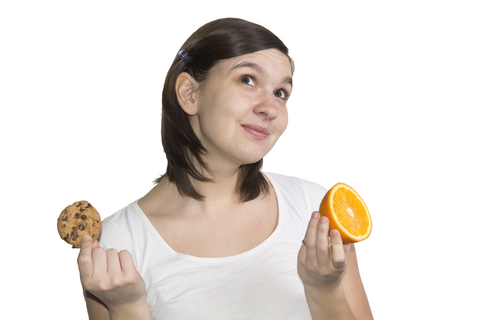By Emily Cook Harrison MS, RD, LD.
The Glycemic Index is a tool that gives a numerical value to a specific amount of food based on how it affects your body’s blood sugar and insulin over a specific time period. Foods with lower numbers don’t spike blood sugar as much as ones with higher numbers and provide more sustained energy.
Why does this matter to dancers?
Dancers who eat foods low on the GI tend to have more sustained energy overtime and more endurance. Not only can low GI foods improve performance, but when eaten before exercise they can help you feel more satisfied and may even help you burn more fat. Whole grains, fruits, vegetables, beans, and peas are all considered good choices.
How to keep a low GI diet
Consider the importance of lowering the GI of your entire diet as a whole instead of picking out foods individually. Basically that means eat more whole foods. When low GI foods are consumed as part of an overall diet, there is a lower insulin response and better glucose control. A low GI diet as a whole helps you feel more satisfied after eating and leads to less overeating. It is also important to eat smaller more frequent meals for good blood sugar control, to feel great, and to dance stronger.
GI facts
- The GI is a numerical index used to describe how a carbohydrate is metabolized/ absorbed and its effect on blood glucose and insulin levels.
- Consuming low GI carbs before endurance exercise results in increased fat oxidation during exercise in trained men and women.
- Participants in a J. Nutr study reported feeling full following lunch in a low GI trial.
- Consuming a low GI breakfast increases fat oxidation during exercise and improves satiety during recovery. (J. Nutr. 139: 890–897, 2009).
Low GI food choices (better choices)
Whole grain/ high fiber breads
Brown rice, basmati rice
Oatmeal
Quinoa
Bran/ high fiber, WG cereals
Pasta (especially whole grain)
Most fruits
Most vegetables
Beans/ legumes
Nuts, seeds
Milk, dairy, soy
High GI foods (not the best choices)
White rice
White bread
Sugar, honey, candy
Cornflakes, Cheerios, Rice Krispies, Coco Puffs
Waffles, Pop-tarts
Baked potato, mashed potatoes
Pretzels
Baked goods, cakes, pies, muffins
Sugary drinks, sodas
Emily Harrison
 Emily Cook Harrison MS, RD, LD
Emily Cook Harrison MS, RD, LD
Emily is a registered dietitian and holds both a bachelor’s and master’s degree in nutrition from Georgia State University. Her master’s thesis research was on elite level ballet dancers and nutrition and she has experience providing nutrition services for weight management, sports nutrition, disordered eating, disease prevention, and food allergies. Emily was a professional dancer for eleven years with the Atlanta Ballet and several other companies. She is a dance educator and the mother of two young children. She now runs the Centre for Dance Nutrition and Healthy Lifestyles. She can be reached at emily@dancernutrition.com www.dancernutrition.com
Resources:
www.glycemicindex.com
www.health.harvard.edu/newsweek/Glycemic_index_and_glycemic_load_for_100_foods.htm
http://lpi.oregonstate.edu/infocenter/foods/grains/gigl.html
Published by Dance Informa digital dance magazine – dance news, dance auditions & dance events.
Top photo: © Dreamstimepoint | Dreamstime.com
















Pingback: Foods to Build Long Lean Muscles | Knowledge
Pingback: Can diet help you remember choreography? | Knowledge